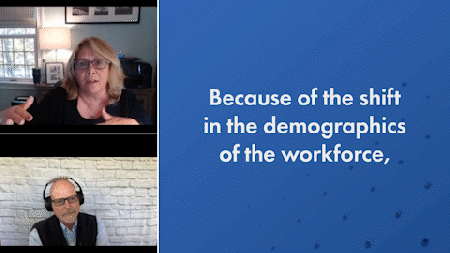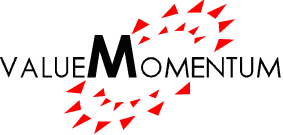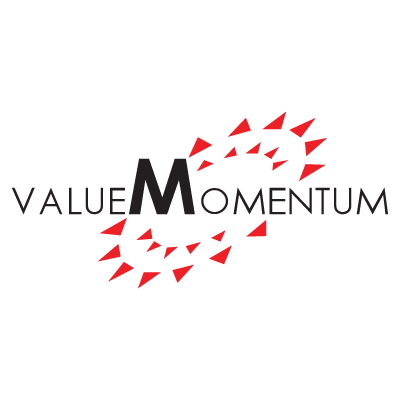The insurance industry is facing a time of immense change and disruption. Carriers must adapt and innovate to stay competitive in today’s digital, customer-centric world. A key part of this adaptation involves leveraging modern insurance core systems to enable business growth and digital transformation.
In a recent webinar, experts from Mountain West Insurance, Datos Insights, and ValueMomentum explored how carriers can take advantage of next-generation core platforms to achieve speed, agility, and differentiated customer experiences.

Insurance Core Systems Drive Business Growth
Deborah Zawisza, Senior Principal at Datos Insights, explained that many insurers are focused on modernizing core systems as enablers for business growth. New core platforms, with configurable products and low-code/no-code interfaces, make it easier for carriers to quickly respond to market conditions and distribute products through digital channels, she said.
Tim Hays, VP and CIO of Mountain West Insurance, noted the challenging environment facing property and casualty (P&C) insurers. Carriers must balance pursuing profitable growth with retaining existing customers. “I need to have profitable operations currently,” Hays said. “And I’m trying to get creative at doing that by looking at my pricing models, looking at my product mix, and looking at customers that may have been underserved.”
Nitin Motlag of ValueMomentum highlighted how new core systems can achieve speed to market for new products and geographies. Using modular components and implementations based on minimum viable products allows carriers to implement niche offerings for targeted segments more rapidly, he said.
Insurance Core Systems Need to Support Ecosystems
Insurers are increasingly looking to ecosystem partners to provide innovative capabilities on top of modern core platforms. As Zawisza explained, this journey began with the enablement of application programming interfaces, or APIs, for easier integration. Now, tighter ecosystem integrations are emerging where partners have cloud-native connections into next-gen core suites, she explained, which means faster time to value when leveraging insurtech solutions.
Motlag noted how some carriers are differentiating through usage-based insurance (UBI) products and Internet of Things (IoT) partnerships. “Modeling of those variables, or modeling of some of the sensors, and so on with the technology, along with your product coverages, that is another innovation or another differentiation that we’ll see.”
Insurance Core Systems Improve Customer Experiences
Hays emphasized the criticality of building a true digital insurance core. “The digital core then becomes the prerequisite to be able to deliver these other services,” Hays said. “In the absence of that digital core, what you’re left with is a scenario where I’ve got to create a lot of middleware-to-edge technologies that create these experiences that I’m looking for.”
 Zawisza highlighted how core modernization also enables better experiences for internal users. “Because of the shift in the demographics of the workforce, some solution providers are really helping onboard less experienced folks through generative AI copilots … helping the employees acclimate to the processes through guidance, not just through training or learning. And I think that’s going to be a pretty important shift for the industry.”
Zawisza highlighted how core modernization also enables better experiences for internal users. “Because of the shift in the demographics of the workforce, some solution providers are really helping onboard less experienced folks through generative AI copilots … helping the employees acclimate to the processes through guidance, not just through training or learning. And I think that’s going to be a pretty important shift for the industry.”
According to Motlag, carriers are innovating on core systems to provide differentiated services and improve customer retention and growth. “Modern core systems provide excellent integration framework, excellent partner ecosystems,” he said. “There are a lot of tools and services available that we can leverage throughout your underwriting or claims processing to provide customer service with speed and accuracy.”
Key Use Cases for Growth
When asked about high-impact use cases, Motlag emphasized accuracy, speed, and ease of doing business. For example, insurers can leverage AI during new business submissions to recommend coverages and limits based on the risk profile. Straight-through processing of documents also streamlines underwriting and claims, leading to “customer delight, in terms of servicing,” he said.
Hays advised carriers to buy modern core platforms rather than building them. This means consuming you are not cloud enabled,” he said, adding that core systems should remove barriers to adopting as-a-Service solutions, which provide speed and agility.
SaaS Delivers More Value
The experts agreed that Software-as-a-Service (SaaS) core solutions deliver the most business value. For example, Motlag said, SaaS provides automated upgrades, access to partner solutions, and tighter integrations.
Zawisza also noted, however, that, given insurers’ footprint and the range of functionalities they need, some workloads are optimized for cloud vs. SaaS. “It really comes down to the function or feature that carriers are looking for and determining which type of solution 1. is available and 2. meets their business need and their time-to-value proposition.”
Cloud Migration is about More than Cost Savings
The panelists provided several recommendations for insurers undertaking core modernization. “Migration to the cloud isn’t necessarily a cost play,” advised Zawisza, adding that carriers should analyze the holistic benefits relative to on-premises systems.
Motlag stressed assessing integrations and customizations, as well as rethinking data strategy to enable real-time dashboards rather than static reports and to support analytics and decision automation initiatives.
Hays noted the importance of having a clear vision for the future end state, which helps bring stakeholders along through the transformation journey.
“How do you grow the organization?” Hays asked. “Start with: Let’s remove the things that are keeping the company from growing.” By taking advantage of next-generation core insurance platforms, carriers can achieve the digital agility needed to drive business growth, he added.
Overcoming Implementation Challenges
The webinar panelists also discussed common challenges when implementing new products and lines of business on modern core systems. According to Motlag, a lack of business readiness and reluctance to change workflows are major hurdles. However, taking advantage of out-of-the-box features accelerates implementation.
Hays emphasized the “three Ps: product, placement, and price.” Technology enables insurers to rapidly model and test new offerings, he said, but figuring out distribution and actuarial factors remains difficult.
For Zawisza, overcoming internal resistance starts with creating a sense of urgency. Leaders need to paint a clear vision and build a guiding coalition to drive change
Data and Analytics are More Powerful in the Cloud
With analytics being key to underwriting, claims, and pricing, the experts offered recommendations on data strategy. Zawisza advised against trying to define all data needs up front. “You’ve got to create an environment that has as much data as possible that you can, over time, start to create into better delivery solutions.”
Hays noted the importance of moving from static reports to real-time dashboards. This requires changing mindsets and consolidating data from disparate systems.
Motlag emphasized architectural flexibility as a prerequisite for advanced analytics. The infrastructure must be designed for easy data access across core and downstream systems.
Change Management is Crucial to Success
Rapid modernization creates a pressing need to get internal stakeholders on board. Hays and Zawisza provided tips on driving adoption. As Hays put it, “You don’t have a choice. We’re doing it.” But it’s critical to demo the software early so people can envision the future state.
For Zawisza, overcoming resistance requires urgency: “It is 2023. And at some level, you know, I think there has to be more of an expectation that you’ve got to be at a certain level of technology maturity as a human to be operating in any kind of information business.”
Other takeaways included choosing SaaS platforms over built-from-scratch, tackling change management head-on, and focusing on speed-enabling digital capabilities. Insurers that embrace these best practices will gain strategic advantages over their competition.
Find out more about how ValueMomentum can help you leverage digital capabilities to drive business growth with our CoreLeverage solutions.


